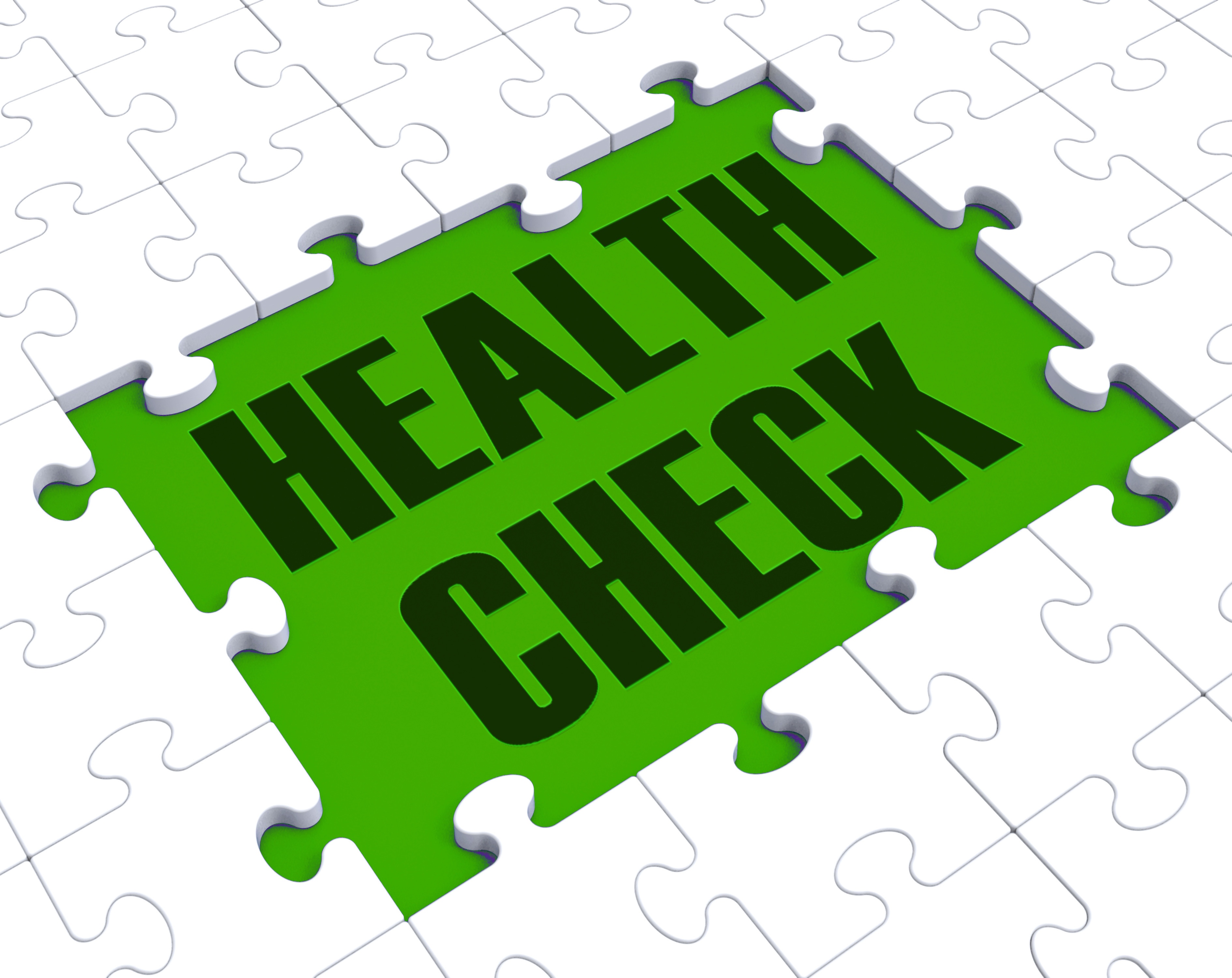Tag: COVID-19
From Home to Office in Record Time
July 13, 2020

From Home to Office in Record Time
In March 2020, out of concern about the coronavirus pandemic, many U.S. workers relocated from office buildings, campuses, and other locations to home offices—or more likely, to living room sofas, dining room tables, kitchen counters, and corner nooks in bedrooms. According to Gallup Panel data, nearly seven in 10 employees are still working remotely all or part of the time.
You may have hit the ground running to set up your home office months ago by securing the basics—a computer, a desk or table, a chair, WiFi or direct Internet connection, ability to access work applications, and sufficient lighting to work on your computer and to participate in live online videoconferences. If you are faced with continuing to work out of your home office for an indefinite period of time, taking time now to do an inventory of your home office environment may help you be more productive, comfortable, and focused.
Be More Productive
Make a realistic schedule so you can complete your top priorities during your peak times of productivity. Try to adhere to your regular work schedule by starting and ending your work day about the same time you would if you were physically at work, take your lunch and snack breaks at the same time each day, and consistently schedule and attend online meetings with your colleagues.
If you’ve experienced intermittent slowdowns or weak or spotty WiFi coverage in certain parts of your home, this could be a good time to upgrade. A new router could be especially helpful to handle the increased demands that come with multiple users in one household. Consumer Reports lets you know “How to Get a Stronger WiFi Signal” and offers tips for WiFi security.
If you are employed by a company with IT staff, consult with them to review your computer, printer, and WiFi setup as well as antivirus and anti-malware software to reach your maximum productivity.
You may have used videoconferencing apps to meet with clients and coworkers as well as family and friends before you started working at home during the pandemic. But, you may not have thought a lot about options, backgrounds, and presentation tips that can enhance your online participation that are provided in a Consumer Reports list of free videoconferencing apps.
If you are still part of a work team, let your colleagues know the best way to connect with you (for example, cell phone, email, text message, FaceTime, or videoconference) and the best times to reach you.
Update your team frequently about the progress of shared work, project deadlines, and other important tasks. Consider using free document creation apps like Google Docs or Microsoft’s Office.com and project management software to keep everyone up-to-date.
Take breaks throughout the day to increase your productivity and improve your circulation. Get up and walk to a different room in the house, get a glass of water, or do a few stretches. Set a reminder on your phone or, if you have a fitness watch, set up alerts to encourage you to move more.
Be More Comfortable
A chair that offers adequate back support with adjustable heights to allow you to change the positioning of your legs during the day and a footstool that can help prevent leg fatigue is the ideal choice. But, in lieu of investing in new furniture, make sure your task chair allows your feet to rest on the floor while your pelvis and lower back fit snugly against the back of the chair. If your chair isn’t adjustable, sitting on a cushion can aid you in being comfortable. Your task chair should support you while avoiding undue pressure on your spine. An ill-fitting chair that encourages you to slouch can result in an aching back and other health repercussions.
In evaluating your chair in relation to your desk or table, you want your arms to be bent around 90 degrees or up to 115 degrees when you place them on your keyboard, with your wrists in a neutral position and not resting on the keyboard. Relax your shoulders, with your elbows near your sides or on the armrests.
You may want to consider using a standing desk either all or part of your workday. Ergonomics experts approve of this option because it encourages users to change positions frequently from sitting to standing throughout the day. Consumer Reports provides a guide, “How to Choose a Standing Desk” to help you find options and price points to meet your home office needs.
Ensure that your workspace has enough electrical outlets to accommodate your computer, printer, and phone chargers to keep your workflow uninterrupted and fully charged.
Pay attention to the availability of natural light sources when setting up your home office and supplement them with artificial light if needed. You’ll feel the benefits of keeping your workspace bright and airy. Since you’re spending the majority of the day sitting or standing at your desk or table, having access to natural light can have an impact on your overall work performance, mood, and wellness. Harvard Business Review reported on a connection between natural light and employee well-being.
Instead of holding your cell phone between your shoulder and ear which may cause neck, back, and shoulder pain if you type while you talk on the phone, use earphones, earbuds, or a headset, or put your phone on speaker mode.
By using an ergonomic keyboard, you can place your wrists and hands in a healthier, more natural position than conventional keyboards to minimize discomfort and injuries like tendonitis. PC Magazine reviewed “The Best Ergonomic Keyboards for 2020” to use to avoid repetitive stress injuries.
Arrange your keyboard so it is centered to your body and if you use a mouse make sure it is within a natural reach to reduce muscle load and prevent strain.
When positioning your computer screen, place it at eye level so you are looking slightly down toward the center of the screen to prevent neck strain, dry eyes, headaches, and blurred vision. Give your eyes regular breaks from the monitor and force yourself to blink frequently when staring at the screen for extended periods of time. Don’t sit too close to the screen—your eyes should be an arm’s length away from the computer. Monitor arms can be used to align your screen but you also can use boxes or books to position your monitor.
View a YouTube video on office ergonomics for additional tips on setting up a comfortable at-home workstation.
Be More Focused
A quality pair of headphones is a simple way to help you focus on your tasks by reducing the noise you hear around you. Consumer Reports reviewed “Best Noise-Canceling Headphones of 2020” that can help you choose a pair that’s right for you. Search YouTube.com for “music for office work” and listen to background music conducive to working calmly in a distracting environment.
If possible, find a dedicated space with a door where you can work free from family activities and unnecessary distractions when you need to focus on deadlines, communication with clients or colleagues, and videoconferences. If you don’t have an option for a space with a door, try to set up an area off-limits to others for a few hours a day or use a foldable screen to indicate your need to minimize interruptions.
Establish a consistent schedule by starting and ending your day at the same time every workday to help you reinforce the separation between ‘work’ and ‘home.’ Establishing a routine also will help you manage your time so you are not working overtime or getting distracted with housekeeping chores during worktime.
Keep your shared calendar updated to ensure that others have accurate information about your availability.
In becoming more productive, comfortable, and focused, while you use part of your home for business, you may be able to deduct some of the expenses incurred when you file your income taxes. The IRS website says the home office deduction is available for both homeowners and renters and applies to all types of homes. Generally, deductions for a home office are based on the percentage of your home devoted to business use. So, if you use a whole room or part of a room for conducting your business, you need to figure out the percentage of your home devoted to your business activities.
At InsureYouKnow.org, you can keep track of your home office expenses, including how you use a percentage of your home to accommodate your business, that you’ll need in 2021 when you file your 2020 income taxes.
Managing Your Health While Avoiding COVID-19
June 29, 2020


Has your fear of coronavirus also induced a fear of going to your doctor for non-COVID symptoms, regular checkups, or recommended health screenings? By using telemedicine options or making sure your doctor’s office is observing safety guidelines for patients and staff, you can fearlessly visit your healthcare provider online or in person. By maintaining continuity of care, you can avoid negative consequences from delayed preventive, chronic, or routine care.
Telemedicine
During the COVID-19 pandemic, you don’t have to choose between medical care and social distancing if you use telemedicine options available from your provider’s office. Remote access also can help preserve the patient-provider relationship at times when an in-person visit is not practical or feasible.
Telemedicine can be a beneficial way to address mental health concerns for the majority of patients. Many patients are comfortable in their own home, scheduling is often more convenient, concerns with transportation and time may be reduced, and adolescents and young adults especially are comfortable using technology to communicate. Telemedicine also can reach patients in rural areas where behavioral health professionals are otherwise in limited supply. Remote access to healthcare services may increase participation for those who are medically or socially vulnerable or who do not have ready access to providers.
In Person
Safety guidelines for healthcare providers’ facilities from the Centers for Disease Control (CDC), the U.S. Department of Health & Human Services, and the World Health Organization include the following recommendations for waiting areas, patient examination rooms, labs, and restrooms:
- Provide supplies—tissues, alcohol-based hand sanitizers, soap at sinks, trash cans, and face masks.
- Place chairs at least 6 feet apart.
- If your office has toys, reading materials, or other communal objects, remove them or clean them regularly.
- Clean areas often with attention to frequently-touched surfaces including doorknobs, armrests, and handrails.
- Fully clean and disinfect exam rooms between each patient.
- Require the use of face masks by staff, patients, and accompanying visitors.
This issue of InsureYouKnow provides preventive health guidelines for the general adult population, based on the recommendations of recognized clinical sources such medical associations and government entities, including the CDC and the United States Preventive Services Task Force. An individual patient’s medical history and physical examination may indicate that further medical tests are needed. Guidelines may also differ from state to state based on state regulations and requirements.
Insurance Coverage
Some tests and vaccinations may not be covered by Medicare or by your health insurance plan, so it’s important to check on your specific coverage before obtaining them. Some insurance companies are currently not only waiving copayments and deductibles for COVID-19 related diagnoses and treatments, but also for telehealth and in-person visits for non-COVID concerns.
Screening Recommendations
- Routine Health Examination: every visit or at least, based on age and insurance contract, your healthcare provider will perform an exam that includes height and weight, calculation of body mass index, obesity determination, and blood pressure measurement.
- Abdominal Aortic Aneurysm: one-time screening with ultrasonography in men ages 65 to 75 years who have ever smoked.
- Breast Cancer: mammography and physician breast exam: annually for women ages 40 and over; breast self-exams: recommended monthly for women beginning at age 20.
- Cervical Cancer: Pap/Human Papilloma Virus (HPV) testing: for women ages 21 to 65, or starting 3 years after the onset of sexual activity, annually without HPV test to age 30; Pap test with HPV test every 3 years after age 30. Women who have had a hysterectomy or are over age 65 may not need a Pap test.
- Colorectal Cancer: for men and women ages 50 to 75 (in certain situations, also may be advisable from ages 75 to 85). Colonoscopy: for men and women, every 10 years. Other screening tests are: Fecal Immunochemical test: stool blood test, every 1-3 years, and CT colonography (an x-ray examination): every 5 years.
- Lung Cancer: annually with low-dose computed tomography in adults ages 55 to 80 years who have a history of heavy smoking and currently smoke or have quit within the past 15 years.
- Prostate Cancer: Digital rectal exam (DRE) and prostate specific antigen (PSA) test/discussion with physician: annually for men 50 and over (starting at age 40 for African-Americans).
- Cholesterol: Lipid Panel, including LDL: every 5 years, or more frequently based on results and risk profile for all men and women starting at age 20, or earlier if cardiac risk profile reveals high risk.
- Diabetes: Fasting Plasma Glucose or Random Plasma Glucose: men and women with high blood pressure, are overweight, or have cardiovascular risk factors; all others age 45 and over.
- Hepatitis B: screen persons at high risk for infection (such as geographic location, HIV positive, immunocompromised); screen pregnant women at their first prenatal visit.
- Hepatitis C: one-time testing of all adults 18 and all pregnant women during every pregnancy. People with risk factors, including people who inject drugs, should be tested regularly.
- Human Immunodeficiency Virus (HIV) Infection: screen in adults age 13 to 65 years and younger adolescents and older adults at increased risk; all pregnant women.
- Hypertension: blood pressure measurement every 1-2 years for all men and women, regardless of age.
- Osteoporosis: DXA (bone-density testing): baseline testing with follow-up intervals based on test results for women ages 65 and over, or starting at menopause if additional risk factors exist.
- Sexually Transmitted Infections (STIs): screen sexually active and those at high risk for syphilis, chlamydia, and gonorrhea and offer intensive behavioral counseling for adults who are at increased risk for STIs.
Immunization/Vaccine Recommendations
- Diphtheria/Tetanus/Pertussis: one time in place of Diphtheria/Tetanus Booster for men and women ages 19 to 64.
- Diphtheria/Tetanus: every 10 years for men and women up to age 65; single vaccination only for men and women 65 or over.
- Human Papillomavirus (HPV): one series of three vaccines for females between ages 11 and 26, and men, two to three doses depending on age at time of initial vaccination; age 19-21 if not already given.
- Influenza (Flu): annually for high-risk adults of any age with diabetes or heart, lung, kidney or immune disease; annually for all adults ages 50 and over; annually for any adult desiring immunization, regardless of age.
- Pneumococcal (for Pneumonia): one dose of PCV 13 and one dose of PCV 23 at least one year after PCV 13 for adults ages 65 and over who are at average risk, for high-risk adults of any age with diabetes, cancer, or heart, lung, or immune disease, Initial vaccination, with single revaccination 5 years later.
- Varicella Zoster (for Shingles): two doses starting at age 50; single vaccination for adults ages 60 and older.
Mental Health Awareness
- Physical Exam: Your primary care provider may give you a physical exam and ask you about your feelings, mood, behavior patterns, and other symptoms. Your provider may also order a blood test to find out if a physical disorder may be causing mental health symptoms.
- Coping with Stress: The COVID-19 pandemic is stressful for many people. Public health actions, such as social distancing, can make people feel isolated and lonely and can increase stress and anxiety. However, these actions are necessary to reduce the spread of COVID-19. Coping with stress in a healthy way will make you, the people you care about, and your community stronger. Know where and how to get treatment and other support services, including counseling or therapy in person or through telehealth services. Free and confidential resources can also help you connect with a skilled, trained counselor in your area.
- Domestic/Intimate Partner Violence: screening and counseling for interpersonal and domestic violence should be addressed immediately. The CDC provides a list of services to assist victims of violence.
Prescriptions
- Doctor visits and approvals as well as lab results are sometimes required in order to obtain or renew prescriptions.
Although health care news covered daily focuses on COVID-19, it’s important not to neglect other medical issues for which you should seek attention and advice from your healthcare professional.
At InsureYouKnow.org, you can save your medical files, lab results, and a list of prescriptions. You also can set up alerts to prompt you to schedule appointments to keep you on track to stay healthy.
On the Lookout for Free Money? Focus Your Search on Grant Opportunities
June 11, 2020

Individuals, communities, nonprofit organizations, and businesses continue to feel the ever-increasing effects of the COVID-19 pandemic. To help keep them afloat while dealing with diminished incomes and benefits, isolation away from friends, family, and colleagues, or facing an unknown future of returning to their previous careers or businesses, they can seek emergency financial assistance.
As the following selected links demonstrate, a variety of grantors are currently offering grants to assist in meeting financial challenges resulting in the continuing threat of COVID-19.
Grantspace by Candid provides a continually updated list of emergency financial resources including the following grant opportunities.
For Individuals
- The United Way, accessible at www.211.org or by dialing 211, provides a comprehensive list of available resourcesto locate food banks, to help pay housing bills, and to access free childcare and other essential services available on local, national, and statewide bases.
- Coronavirus Tax Relief: Economic Impact Payments is an IRS web page that lets non-filers enter payment information and others to check on the status of their stimulus payments.
- Economic Impact Payments: What you need to know is a FAQ page created by the IRS to answer questions about stimulus payments.
- Restaurant Workers’ Community Foundation COVID-19 Relief Fund provides emergency funding for those employed by or own restaurants or bars facing unforeseen expenses not covered by insurance.
- Americans for the Arts Coronavirus Resource and Response Center includes a list of funding/grants resources.
- COVID-19 Freelance Artists Resources is an aggregated list of free resources, opportunities, and financial relief options available to artists of all disciplines.
- Creative Capital Arts Resources During the COVID-19 Outbreak is another list of financial resources for artists working in all disciplines.
- Freelancers Relief Fund grants financial assistance of up to $1,000 per freelance household to cover lost income and essential expenses not covered by government relief programs.
- Student Relief Fund lists resources for college students in need of support due to campus shutdowns caused by COVID-19.
- Artist Relief lists grants for artists facing dire financial emergencies due to COVID-19 in the U.S.
- Artist Relief Project publicizes grants for any artist in any discipline whose income has been impacted by COVID-19-related cancellations and closures.
- American Guild of Musical Artists (AGMA) Relief Fund provides support and temporary financial assistance to members in need.
- Equal Sound Corona Relief Fund for Musicians who have lost income due to a cancelled performance as a result of the COVID-19 outbreak.
- New Music Solidarity Fund offers emergency funds to support freelance artists in the new/creative/improvised music community.
- Dramatists Guild Foundation Emergency Grants provides emergency financial assistance to individual playwrights, composers, lyricists, and book writers in dire need of funds due to severe hardship or unexpected illness.
For Communities
- GrantWatch promotes an Opportunity for USA Organizations to Raise Funds to Benefit Communities Impacted by the Coronavirus (COVID-19).
- Community Foundations Nationwide Launch Coronavirus Relief Efforts is a full listing of more than 500 U.S. community foundations in all 50 states, plus the District of Columbia, that support those affected by COVID-19—directing critical relief to local nonprofits and partnering with local governments and health organizations to help contain its spread.
For Small Businesses
- Small Business Administration Disaster Assistance Loans provide economic relief to businesses that are currently experiencing a temporary loss of revenue.
- SBA Paycheck Protection Program – An SBA loan that helps businesses keep their workforce employed during the COVID-19 crisis.
- GoFundMe Small Business Relief Fund helps small businesses that have been affected by the COVID-19 pandemic and empower their communities to rally behind them. GoFundMe has partnered with Yelp, Intuit QuickBooks, GoDaddy, and Bill.com to provide small business owners with the financial support and resources needed to continue running their businesses during and after the coronavirus crisis.
- Facebook Small Business Grants Program – Facebook is offering $100M in cash grants and ad credits for up to 30,000 eligible small businesses in over 30 countries where it operates.
- Financial Assistance for Small Business is a list of programs providing financial assistance to small businesses compiled by the U.S. Chamber of Commerce Foundation.
- Opportunity Fund Small Business Relief Fund supports eligible small businesses, especially those run by women, people of color, and immigrants, impacted by the COVID-19 crisis.
For Nonprofits
- Funding for Coronavirus (COVID-19) shares information about philanthropy’s response to the pandemic
- CARES Act: How to Apply for Nonprofit Relief Funds is a guide created by Independent Sector.
- Loans Available for Nonprofits in the CARES Act is a chart from the National Council of Nonprofits providing details on loan options, eligibility criteria, terms, and application information.
- State Public Policy Resources on COVID-19 is the National Council of Nonprofits page for nonprofit-specific materials from state officials and useful resources on what states are doing in response to COVID-19.
- Grantmakers Concerned with Immigrants & Refugees COVID-19 Resources is an aggregated list of resources for nonprofits working with immigrants & refugees.
In general, grant opportunities and corresponding applications adhere to strictly announced deadlines and requirements so potential grantees need to submit proposals on time and meet the specific provisions outlined in each grant’s description. At InsureYouKnow.org, you can save your documents and files relating to grant applications and set up reminders to alert you to keep track of timelines for submitting grant applications and to check on grants awarded.
Mayday…Mayday….
April 29, 2020

Created as a distress signal in the 1920s, the term mayday is utilized by ships and aircraft to communicate emergency or life-threatening situations. When officer, Frederick Stanley Mockford thought of the word, the pandemic crisis of 1918 and the end of the First World War was not even a decade past.
Fast-forwarding 100 years to May 2020 – the coronavirus pandemic is very much part of everyone’s life and lifestyle. In a matter of weeks, the way the world looked at itself was turned around, and some questions come to mind….
Is our planet in a state of Mayday?
Depends on who and what you are referring to. The environment is thriving, the oceans are cleaner, and the animals are not scared and are coming out into many city dwellings. The seals are basking on the beaches where humans were. The water, and air is cleaner as the pollution subsides. The planet called Mayday, and now the humans are. However the story is not the same for mankind. Humans are dying – living in fear of contracting the virus and staying indoors and isolated. The economy is in a state of flux, no one wants oil – a once huge commodity. The luxuries of stock trading and vacations are now replaced with the luxuries of accessing food, and human touch.
Is our country in a state of Mayday?
The way the world worked has changed. Our fast paced lives have in some ways slowed down as transportation needs have reduced, and the working world has shifted focus. Going into work, going to school, errands, and shopping have been restricted by both private and public entities. Federal and local governments are rapidly reviewing information and making life-changing decisions about access to healthcare, food, and the outdoors. In some ways the Mayday call has already been sent from the public sector to the private. Our country has forced its community to ramp up the use of technology for communication. The internet is now a necessity for video-meetings that are replacing work conferences, family birthday gatherings and learning. Remote payments instead of cash exchange for services. And the state of the unknown has created an undercurrent of anxiety.
Do you need to signal Mayday?
Checking in with yourself about your needs is paramount. Where you are at emotionally, physically, socially, financially impacts your relations and ability to function with the new day to day. There is little control. Access to food, loved ones, work and our old lifestyle can bring up feelings of anger, resentment, and fear. Reaching out for support or connecting with your community could stop your need for the Mayday call.
InsureYouKnow.org – an online information depository allows those that receive your Mayday call, this month, this year, this decade to access documents, and files remotely relating to your affairs. Whether photographs to relive memories, financial information to cover debt, or your resume for a possible job opportunity. There are various levels of access to allow your family members, caregivers or business associates insight into your documents – as needed. There is even a trusty reminder feature to help you remember that it’s time to update.
In Case of Pandemic…
April 20, 2020

We all have or should have In-case-of-Emergency documentation, but did we ever think about in case of pandemic? The current situation can make a difference in the way that our emergency plans work. There are many lists and suggestions of “in case of emergency” documents that everyone should have together, but in our current COVID-19 pandemic situation, there may be areas that need to be reviewed or even created.
With the unknown of when the pandemic will end or if we are in the peak of the homebound regulations, the question of access has become a source of anxiety. Below are three areas of access to consider when we are in pandemic.
Access to Resources
Some of our resources are easier to access than others. Groceries are the ones that we are hearing about on the news – we can’t get the basics – milk, eggs, toilet paper, hand sanitizer. There are grocery delivery services, volunteers in the neighborhoods and local nonprofits that are currently marketing their services – facebook, nextdoor and even conversing with neighbors or friends can uncover options.
Our safe deposit box. The place that we have been keeping our trusty resources are in some ways inaccessible. Our financial institutions may still be open but are you able to get to them safely given the WHO recommendations. Many locations are having special hours for seniors and high-risk patrons.
Many people in the workforce have experienced changes in the work environment. From job insecurity, furloughing, limited hours – to work from home, working in a new location or role. Financial resources may be reduced, and not being able to use your computer, access your desk drawers, use the same extensions to reach people can be tough.
Action: Have you been able to reorient yourself to the new resource allocation? Is there something that is missing that you wish you could have to make your life just a little bit easier?
Access to Care
Our healthcare routine is currently disrupted. Getting to the doctor’s appointments, picking up prescriptions, and going to therapy or residential care facilities is not always possible.
Many providers have been communicating how you can access them if there is a need – often by telemedicine routes. Local or satellite offices are consolidating care in a central location and many doctors are not available every day.
Action: Is your doctor only conducting telehealth visits? If so – the telehealth visits often need technology set up on computers or phones, and walking through the steps now instead of during the appointment can be advantageous.
Access to Loved Ones
Technology is our friend. We may not live with our top-ten people, or even have another person in our home, but phone and video chat have given us the opportunity to access our loved-ones lives in their homes.
If you do need to go to the hospital, a loved one may not permitted to accompany you into the triage area. Your next of kin or preferred person may be high risk and it may not be safe for their health, to come with you. If you need to stay in the hospital, whether for a birth of a child, broken bone, or in the ICU – your loved ones will not be able to stay or visit. These are challenges that are new to all of us. Health care teams are working to help you connect to your loved ones through ipads and phone conversations.
Action – Have a list of people with their phone numbers and consider who would be able to come with you to the doctor office or hospital that is not high-risk.
As you start putting your new “pandemic” documents and plan together consider using InsureYouKnow.org – an online information-safe, as a place to store them. This product gives you the ability to access documents, and files remotely – or from the comforts of your own home. There are various levels of access to allow your family members, caregivers or business associates insight into your documents – as needed. There is even a trusty reminder feature to help you remember that it’s time to update.
April Fools…
March 31, 2020

If 40 days ago – you turned on the TV or read the news which told you the world was in quarantine and curfew status, you may have called a friend to check or thought it was an April Fools prank. The rapid spread of COVID-19 has changed the globe, causing governments to enact shelter-in-place, quarantines and curfews. Knowledge of the virus began in December 2019 and became a pandemic in March 2020. The lives of many have changed from carefree to careful, from rushed to restful in an attempt to save the population from contracting the disease.
April Fools’ Day originated in a time of change. It is unclear of the actual origins, or how it has become a tradition from Europe to the Americas, but there are two main theories. The transforming of the seasons – Winter to Spring – may have precipitated the start of the April Fool’s tradition of pranks, or the introduction of the new calendar from Julian to Gregorian. The 1700 was a world without the technologies, however the pranks ranged from announcing a never-seen-before performance to the poisson-d’avril – April fish – which still continues today.
Though some of you may be homebound, or spending time indoors, here are ten easy Ideas for April Fools which can be implemented in your home. Hopefully, these can bring some smiles and stress-relief to start the month.
1 – Change the clocks
Many options with this one – An hour, three hours, make it earlier or later. This one is sure to make a person take a second look.
2 – Switch salt and sugar
Morning-coffee, or afternoon-tea with a spoonful of salt? A sweetened dinner? Stand away from the person consuming the food and have the camera ready.
3 – Rearrange the drawers – socks in the t-shirt drawer
Reach in your drawer and pull out the swimsuit, or winter scarf. Move the sock drawer down and the t-shirt drawer up.
4 – Hide bugs/snakes around the house
Not for the faint of heart – find some fake bugs in the children’s toys, or draw some in dark colors and create shadows. Record and replay the shrieks.
5 – Change outfits every 30mins and act like nothing is different
Take a chance to go through your closet and put together a new outfit every few minutes. A good way for you to try on your clothes, and the people in your home to take a pause.
6 – Put eyes on everything in the refrigerator
Find googly eyes and stick them on everything in the refrigerator for an eerie view of the contents. Opening of the door of the fridge has never been so anticipatory.
7 – Switch toothbrushes/soaps/mugs
For those of you with multiple bathrooms, switch the toothbrushes or soaps around.
8 – Wear a wig to bed
Adorn the Halloween wig and wait for the surprise in the morning.
9 – Change the ring tone and volume of a phone in your home.
Whether a cell phone or the house phone, your phone or your partners – a new sound in the home is cause for a few minutes of searching.
10 – Act like you are having a huge fight with someone – GOTCHA.
Pick a topic of contention, or of historical reference and have an intense one-sided conversation. This can work in person or over the phone and be sure to break the intensity with a distinct – GOTCHA.
At the end of the day – take a break from the routine and the demands of the day for some light-hearted humor. If you don’t have people in your home to play a practical joke on – utilize social media to tag a random picture with your friend’s name, or call someone and use a distorted voice.
Don’t forget to take pictures or videos and upload it onto InsureYouKnow.org. It’s a safe place to store all the information in case you need to access it remotely – or from the comforts of your own home.
